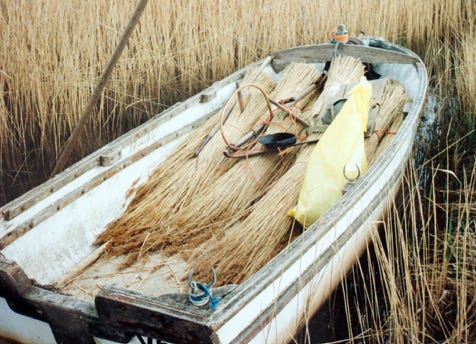Hickling Reed and Thatch
PUBLISHED in HICKLING HERALD
Page 1
Hickling Reed and Thatch - continued
So, Jack became a thatcher. He taught his son, Steve, who taught Mick, and they taught the next generation, too. Their work can be seen all over Hickling, including the boathouses on Hill Common, which have been rethatched by father and son over the years (and my house, too – Ed).
Reed-cutting has been criticised for damaging wildlife habitats, but it is now recognised that a well-managed reed bed supports more and specific species of wildlife than one left to its own devices. Regular cutting shapes the dykes and reed beds and without it the beds can choke, dry out and transition in time to scrub. Our reed cutters recall how they valued the wildlife; from the vipers sunning themselves on the cut reed piles, to the nests of bittern, crane or marsh harriers, which were identified, carefully marked and avoided.
Only small areas of reed are now managed for thatch locally. Reed is now imported in containers from Ukraine, Poland, Hungary or Holland. The Broads Authority has funded initiatives to support reed cutting skills and traditions and in 2003 the Broads Reed and Sedge Cutters Association (Brasca) was founded to lobby for change. Listening to the voices of reed cutter and thatcher across the last half century, we can understand the interdependence of all the elements and encourage conservationists to take this into account in current management.


Last load of reed for the season cut by George Newman
Photo by George Newman